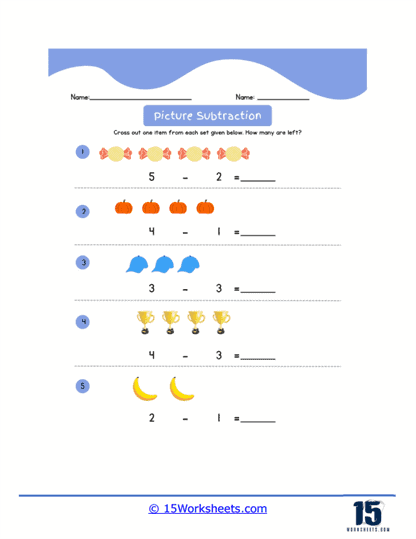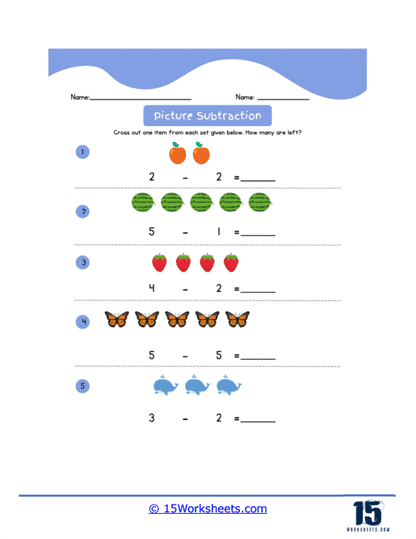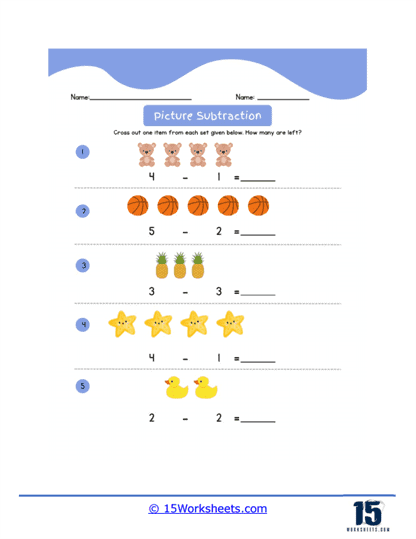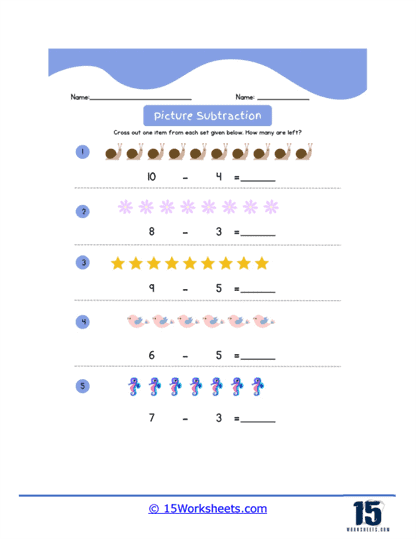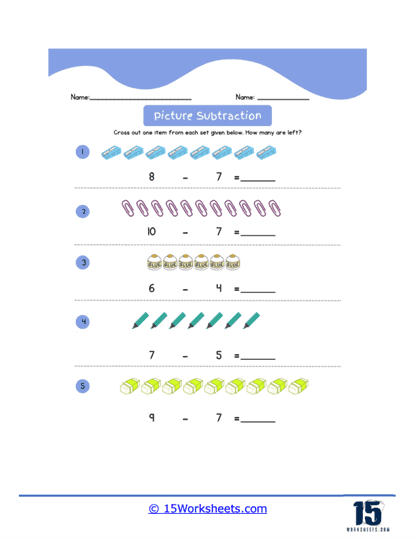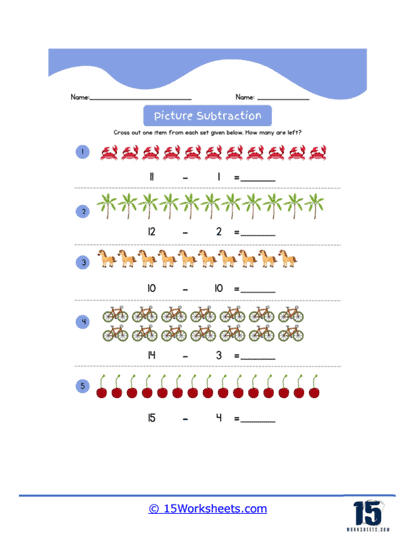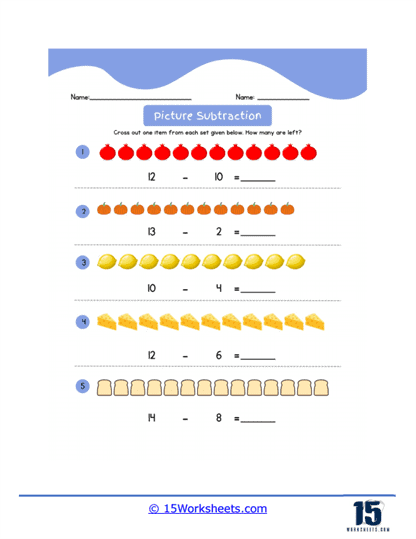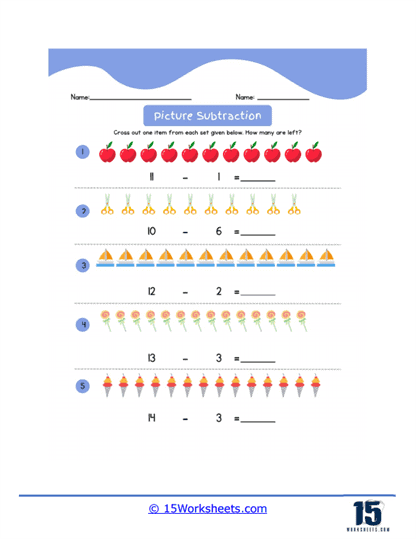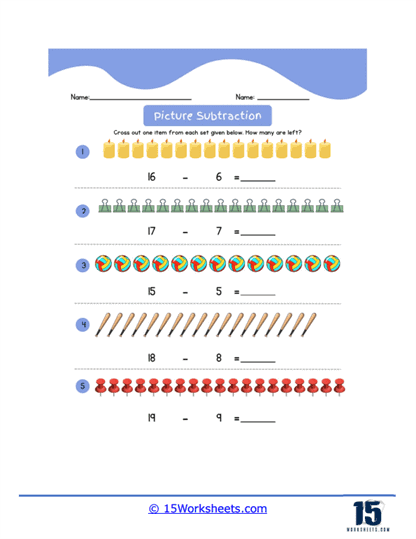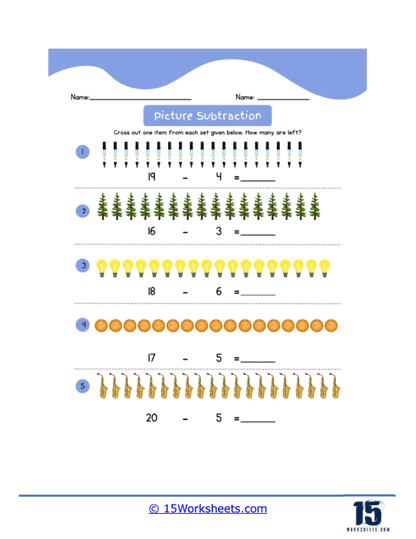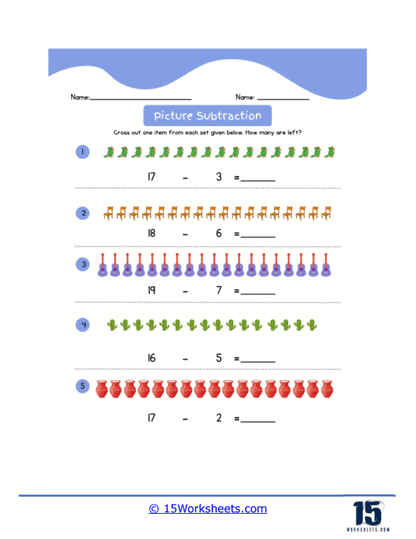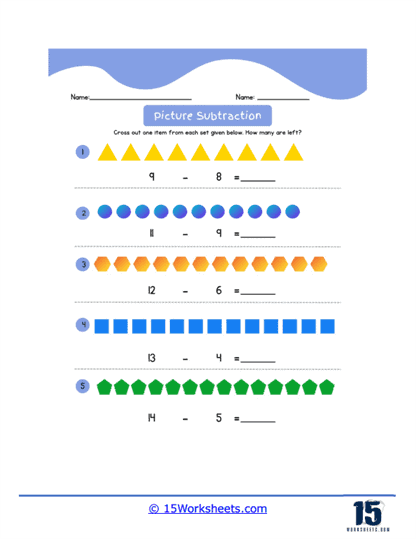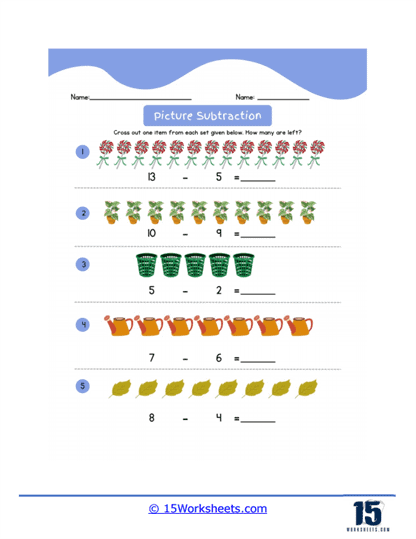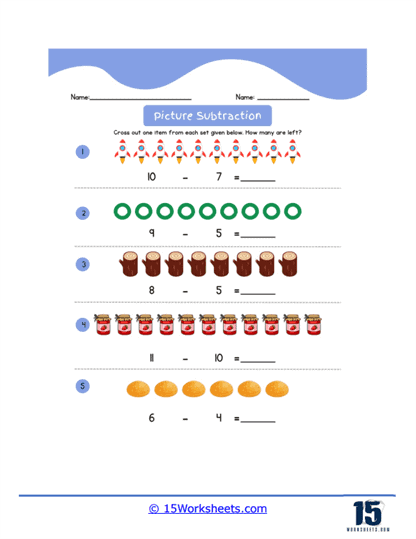Picture Subtraction Worksheets
About These 15 Worksheets
You know how subtraction is about taking away something from a bigger number, right? Like if you have 7 apples and you eat 2, you’re left with 5. That’s subtraction. These worksheets help you visualize this process. So instead of just seeing numbers, you’d see pictures. Let’s say you have a picture of 7 apples, and then you cross out or erase 2 of them. The apples you’re left with, which will be 5, are your answer.
Picture subtraction worksheets can have all sorts of pictures – it could be stars, balloons, candies, anything! The idea is to make subtraction more fun and easy to understand for you. So, instead of seeing “7 – 2 = 5”, you would see “7 apples – 2 apples = 5 apples”.
And just like your regular worksheets, you’ll have a whole bunch of these problems to solve. It helps make subtraction feel like less of a chore and more of a game. It’s a great way to learn and understand subtraction better!
How Do Images Help Students Learn Operations
Using pictures to teach subtraction can be highly beneficial for several reasons:
Visual and Concrete Representation
Pictures provide a visual representation of the problem, making it easier for learners, especially young children, to grasp the concept of subtraction. Visual aids help in understanding the relationship between quantities, which is fundamental to subtraction. Pictures offer a concrete representation of the problem, allowing learners to associate the numbers with real-world objects or scenarios. This concrete understanding helps in developing a strong foundation in subtraction and enhances comprehension.
Engaging and Interactive
Pictures make the learning process more engaging and interactive. By incorporating colorful and relatable images, learners are more likely to remain interested and actively participate in the learning activity. This can enhance motivation and improve the overall learning experience. When presented with pictures, learners are encouraged to think critically and solve problems by identifying the objects to subtract or count the remaining objects. This promotes analytical thinking and problem-solving skills, which are valuable beyond just basic subtraction.
Different Learning Styles
People have different learning styles, and visual learners, in particular, benefit greatly from the use of pictures. By incorporating visual elements into subtraction lessons, educators cater to a broader range of learning styles, making it easier for all students to comprehend and retain the information. Pictures can be particularly helpful when teaching subtraction to students who are non-native speakers or have limited language proficiency. Visual aids transcend language barriers, allowing students to understand the concept without relying heavily on verbal or written instructions.
Memory Retention
Visuals tend to be more memorable than abstract concepts or numbers alone. When learners associate subtraction with images, they create stronger mental connections, making it easier to recall the information later. This can lead to better long-term retention and recall of subtraction concepts. Using pictures that depict everyday situations or practical examples helps learners see the relevance of subtraction in their daily lives. It enables them to apply the learned skills to real-life scenarios, such as counting objects or calculating changes, which reinforces the understanding of subtraction.

